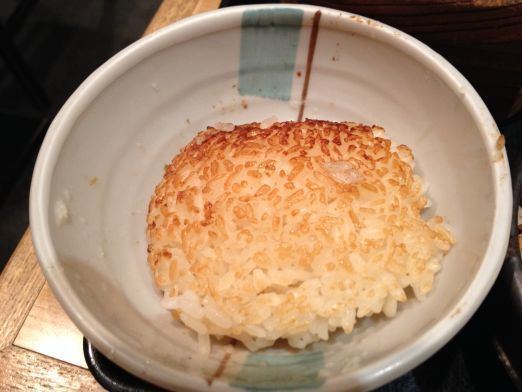 | ||
Okoge (お焦げ, おこげ) is a Japanese cooking term that can refer to any type of food that has been scorched or blackened, but usually referring specifically to rice.
Until electric rice cookers came into common use in the 20th century, rice in Japan was cooked in a kamado, a traditional stove heated by wood or charcoal. Because regulating the heat of a wood or charcoal fire is more difficult, a layer of rice at the bottom of the pot would often be slightly burned during cooking; this layer, called okoge, was not discarded, but was eaten with vegetables or moistened with water, soup, or tea.
Okoge is still eaten in Japanese cuisine, and is an important part of the kaiseki meal served at tea ceremonies, where it is typically served with hot water and pickles as the final course. It has a crispy texture and a nutty flavour.
Because the cooking temperature of modern electric rice cookers is precisely controlled, okoge does not usually form naturally during the cooking process. However, there are rice cookers on the market in Japan that have an okoge setting. Okoge can also be made by scorching cooked rice in a frying pan.
In other cuisines
In Chinese cuisine, scorched rice is called guoba (鍋耙, 鍋巴, 锅巴, lit. "pan adherents"). It may occur during the cooking of rice, or be produced by frying cooked rice in oil. It is served as an ingredient in other dishes or as a snack.
In Korean cuisine, scorched rice is called nurungji (hangul: 누룽지). It is used in similar ways to okoge.
Scorched rice, called tahdig, is also a feature of Iranian cuisine.
In Colombian cuisine, scorched rice is called Pega/Pego. It is often eaten with vegetables on top as a cracker, or served in soups. It is also eaten alone or used to make leftovers.
In Dominican cuisine, scorched rice is called Concón.
In Puerto Rican cuisine, scorched rice is called Pegao.
